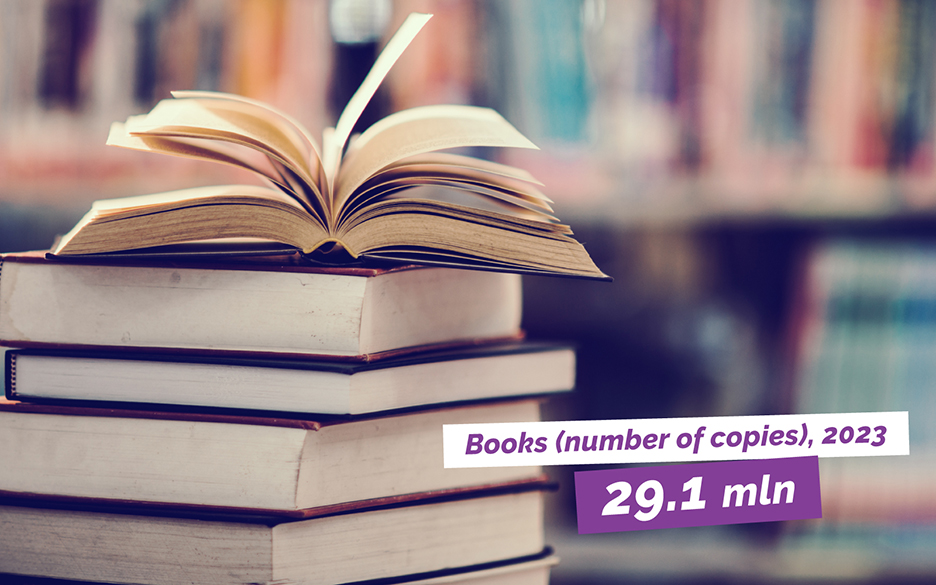| * |
corrected data |
| - |
no occurrence |
| ... |
data not available |
| . |
not zero, but not published due to the extremely inaccurate estimation |
| p |
less accurate estimation |
| ( ) |
less accurate data |
| bn |
billion |
| CEFTA |
Central European Free Trade Agreement |
| CHP |
combined heat and power generation |
| DWT |
deadweight tonne |
| ECOICOP |
Classification of Individual Consumption according to Purpose |
| EU |
European Union |
| EUR |
euro |
| GDP |
gross domestic product |
| GT |
gross tonnage (gross registered tonnage) |
| GWh |
gigawatt hour |
| ha |
hectare |
| km |
kilometre |
| km2 |
square kilometre |
| kW |
kilowatt |
m2 |
square metre |
| m3 |
cubic metre |
| MIGs 2009 |
Main Industrial Groupings 2009 |
| mln |
million |
| NIP |
Nomenclature of Industrial Products |
| NKD 2007 |
National Classification of Activities, 2007 version |
| NN |
Narodne novine, official gazette of the Republic of Croatia |
| NPISH |
non-profit institutions serving households |
| PIN (OIB) |
personal identification number |
| t |
tonne |
| '000 |
thousand |
| VAT |
value added tax |
Published by the Croatian Bureau of Statistics, Zagreb, Ilica 3, P. O. B. 80
Phone: (+385 1) 48 06 111
Web site: dzs.gov.hr
Press corner: press@dzs.hr
Persons responsible:
Andrea Galić Nagyszombaty, Director of Statistical Methodologies, Quality and Customer Relations Directorate
Mario Vlajčević, Director of Demographic and Social Statistics Directorate
Suzana Šamec, Director of Macroeconomic Statistics Directorate
Edita Omerzo, Director of Spatial Statistics Directorate
Milenka Primorac Čačić, Director of Business Statistics Directorate
Lidija Brković, Director General
Prepared by: Kristijan Jurić, Maja Marković and Ana Samaržija
Editor: Ljiljana Ostroški
Technical Editor: Ankica Bajzek Cesar
Language Editor: Maja Gregorić
Translator: Neda Batinić
Graphic Design: Sanja Huseinagić and Nino Mrša
ISSN 3044-1692
USERS ARE KINDLY REQUESTED TO STATE THE SOURCE WHEN USING THE DATA
Culture and arts have an important role in the development of society because they contribute to the consolidation of social identity through the preservation of heritage and tradition. At the same time, cultural content encourages social cohesion and mutual tolerance and the connection of people of different origins, and the development of, for example, cultural tourism strengthens the economic prosperity of a country. Monitoring statistical data in this area is important because it enables a better understanding of the community's needs for cultural and artistic content, provides a basis for the distribution of public funds intended for cultural programmes and institutions, and helps quantify the economic impact of it all.

In the 2022/2023 season, professional theatres for all ages performed 23.0% more plays in Croatia and abroad and had 38.7% more visitors than in the previous season. Amateurs’ theatres performed 139 titles for 69.6 thousand visitors in Croatia and abroad, with a total of 488 plays performed, while professional children's theatres performed 619 titles, which was 45.9% more than in the previous season, and for as many as 520.3 thousand youngest visitors.
In 2023, there was an increase in the number of screenings and attendances in cinemas. Compared to 2022, the number of screenings was 1.7% higher in 2023, and there were 22.9% more attendances.
In the 2022/2023 season, 37 professional orchestras and ensembles operated, out of which six were symphony and large orchestras, seven chamber orchestras and 24 chamber ensembles. A total of 694 concerts, performances and festivities were performed, which were attended by 209.6 thousand visitors.
In 2023, a total of 1 872 libraries operated on the territory of the Republic of Croatia, including branches and parts of other libraries which included one national library, 23 university libraries, 100 libraries at institutions of higher education, two scientific libraries, 106 specialised libraries, 309 public libraries, 965 libraries in basic schools and 366 libraries in secondary schools, containing over 30 million of books.

← Previous Next →
 Hrvatski
Download data
Hrvatski
Download data



